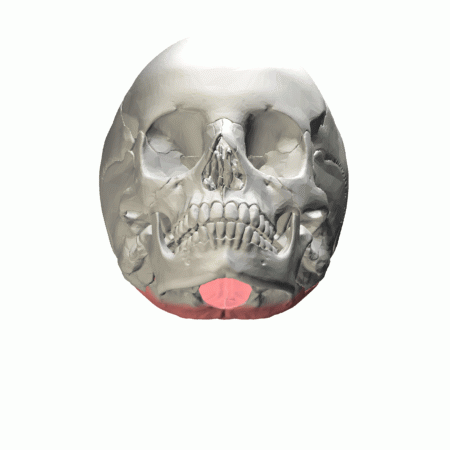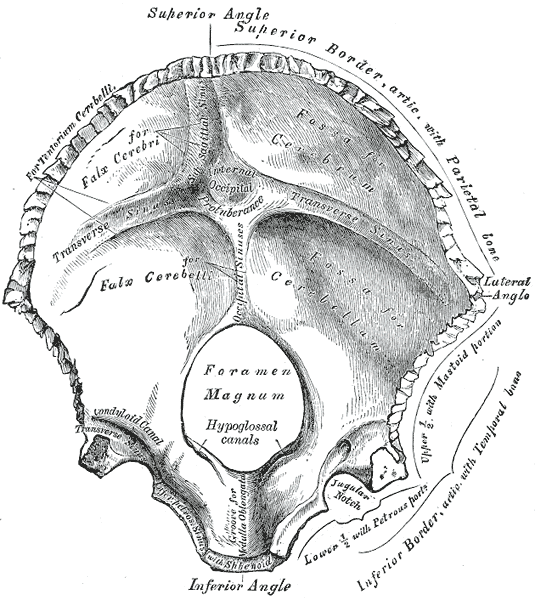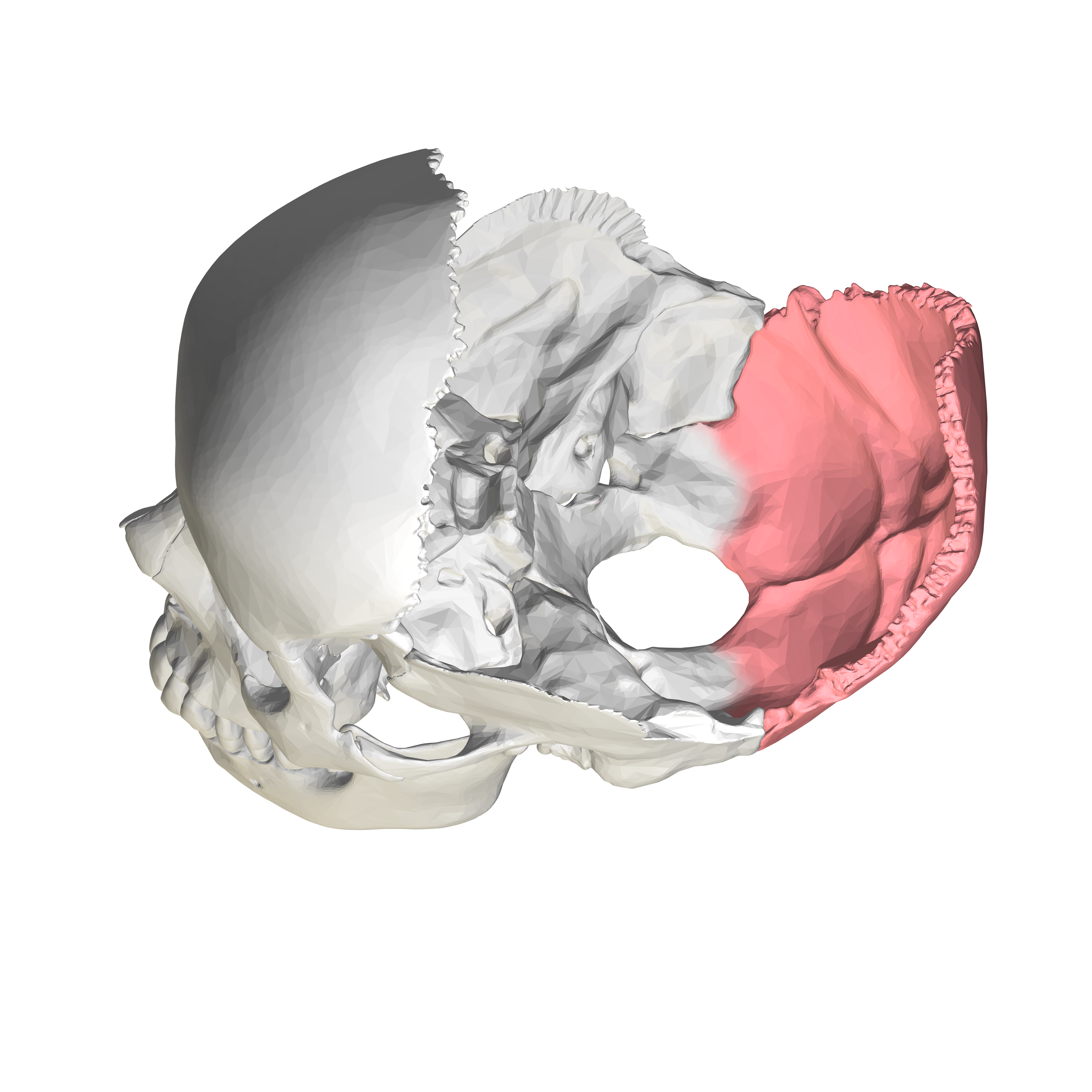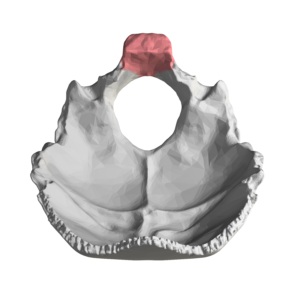
Hello medical students, today’s lesson is a deep dive into the squamous part of the occipital bone. This complex structure is essential to our anatomy and our brain’s protection, and understanding its intricacies is a critical part of your medical education.
The occipital bone, situated at the posterior part of the skull, is one of the most complex bones in the human body. It consists of four parts: the squamous part, two occipital condyles, and the basilar part. This blog post will focus exclusively on the squamous part of the occipital bone, outlining its anatomy, function, and relevance in clinical practice.
Anatomy
The squamous part is the largest portion of the occipital bone. It’s marked by its flattened, roughly rectangular shape. This area contains a prominent feature known as the external occipital protuberance, a noticeable bump in the middle of the back of the skull that serves as an important landmark in cranial anatomy. Other features on the squamous part of the occipital bone include the superior and inferior nuchal lines, which provide points of attachment for several muscles and ligaments of the neck.
A distinct feature is the external occipital crest, which is a ridge extending downward from the external occipital protuberance. This structure serves as the attachment point for the nuchal ligament. Internally, the squamous part exhibits the internal occipital protuberance, to either side of which are the superior and inferior occipital sinuses.

Internal and External Surfaces of the Squamous Part of the Occipital Bone
Let’s delve deeper into the specifics of the internal and external surfaces of the squamous part of the occipital bone.
External Surface
The external surface of the squamous part is convex and presents several notable features:
- External Occipital Protuberance: This is the most prominent point on the external surface and can be easily felt at the back of the skull.
- Superior Nuchal Lines: These are four curved ridges of bone that extend laterally from the external occipital protuberance. The lines are labeled as highest, superior, intermediate, and inferior. They serve as attachment points for various neck and back muscles.
- Inferior Nuchal Lines: These are two lines that extend from the midpoint of the superior nuchal line to the side of the skull. They are attachment points for important muscles like the rectus capitis posterior minor and major.
- External Occipital Crest: Also known as the median nuchal line, this feature extends downwards from the external occipital protuberance. It marks the attachment of the nuchal ligament.
Internal Surface
The internal surface of the squamous part is concave and presents several features:
- Internal Occipital Protuberance: Found in the center of the internal surface, this feature is where the four major sinuses (the straight, transverse, and the two sigmoid sinuses) intersect at the confluence of sinuses, also known as the torcula Herophili.
- Superior and Inferior Occipital Fossae: These two fossae are separated by the internal occipital crest. The superior occipital fossa accommodates the occipital lobes of the cerebrum, while the inferior occipital fossa houses the cerebellum.
- Internal Occipital Crest: This structure extends downwards from the internal occipital protuberance and serves as a partial divider between the left and right hemispheres of the cerebellum.
- Occipital Sinuses: These are grooves for the occipital sinuses which run along the internal occipital crest.
- Cerebral Fossae: These are depressions that accommodate the cerebral hemispheres.
Understanding these surfaces and their landmarks is integral to many clinical procedures and diagnoses, from interpreting radiological images to planning surgical interventions.
Function
The primary role of the squamous part of the occipital bone, like other skull bones, is to protect the brain. It specifically safeguards the cerebellum, which plays a pivotal role in motor control, balance, and coordination.
The squamous part also provides attachment sites for various muscles. For instance, the trapezius, sternocleidomastoid, and occipitalis muscles attach to the superior nuchal line, while the inferior nuchal line provides attachment for muscles such as the rectus capitis posterior major and minor.
Clinical Relevance
Knowledge of the squamous part of the occipital bone is essential in several clinical scenarios.
- Head and Neck Trauma: Traumatic injuries can lead to fractures of the occipital bone, including the squamous part. These fractures can be associated with significant morbidity, given their proximity to the brain. Prompt recognition and appropriate treatment are essential for optimal patient outcomes.
- Radiological Imaging: Understanding the anatomy of the squamous part of the occipital bone is crucial for interpreting various imaging studies, such as CT and MRI scans. This knowledge allows physicians to identify pathological conditions like tumors, infections, or vascular abnormalities.
- Surgical Procedures: The squamous part of the occipital bone is relevant in surgical procedures such as craniotomies, where a section of the skull is temporarily removed to access the brain.

Conclusion
The squamous part of the occipital bone, while often overlooked in favor of more complex structures, serves a vital role in protecting the brain and providing attachment points for important muscles and ligaments. As future medical practitioners, understanding the anatomy and function of this structure will play an invaluable role in your ability to diagnose and treat conditions related to it.



